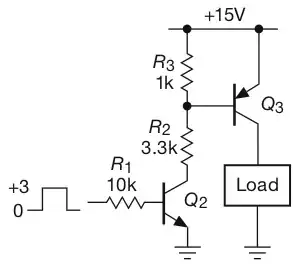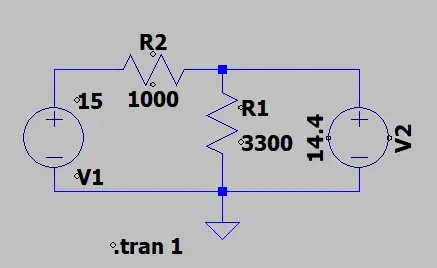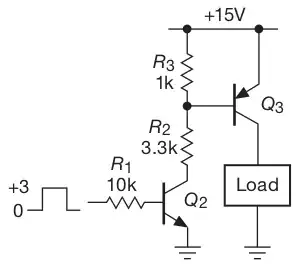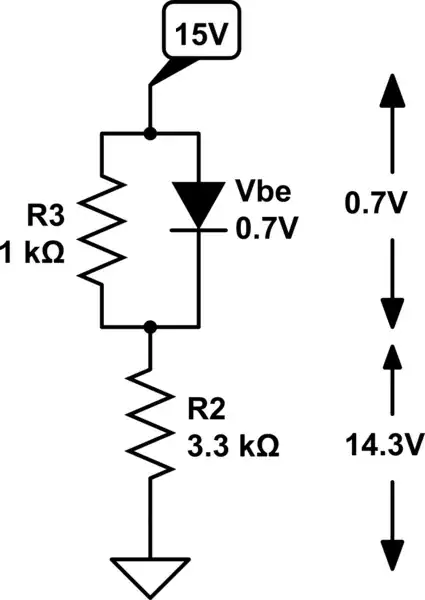New to electronics and looking to deepen my understanding of things by going through the Art Of Electronics. I've hit figure 2.10B and it's amusing statement:
"... only ~0.6mA of the 4.4mA collector current comes from R3 - make sure you understand why"
Here I am, asking for a clarification/guidance on whether or not I've understood why.
My first thought was. 0.6V is needed on the base of Q3 to turn it in, so if that voltage exists, a current must also exist but couldn't think how to reach 0.6mA from this. Could this thought lead to an answer or am I off course?
My second attempt to analyse it was prompted from reading this similar Q&A: PNP Circuit-The Art of Electronics
I decided to view it as a simpler circuit with two voltage sources, where the second is Vcc after deducting the 0.6 for Veb:
Which can be sperated into separate circuits and then the currents solved for each resistor:
This seemed to make sense, with the current over R2 becoming (0.015 - 0.014 = 0.0006 = 0.6mA). This meant that the absense of V2 had a short over R1 so there was no contribution from V1, but this didn't align with the text saying that 0.6mA is contributed by V1.
Am I along the right tracks - and/or have I been clear enough to get some guidance?
Many thanks in advance,




